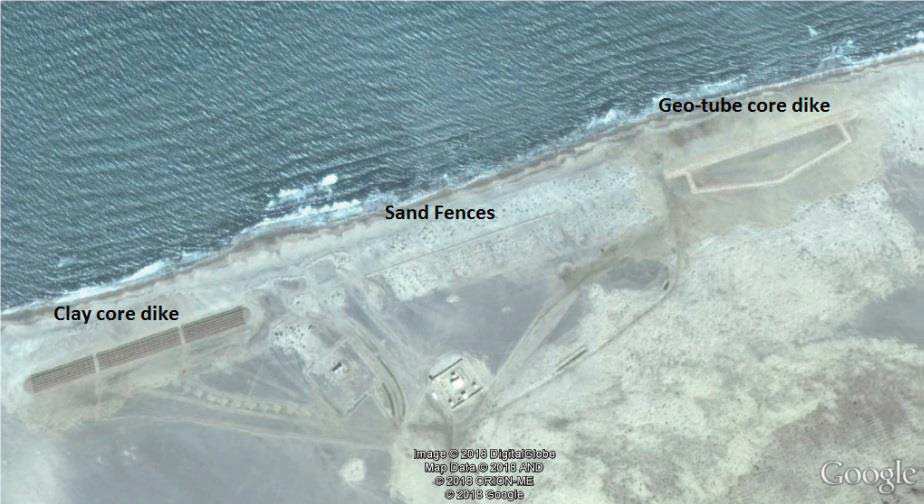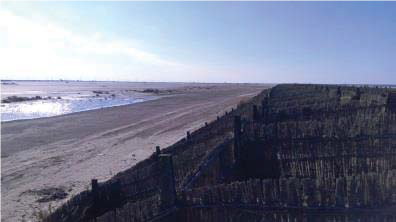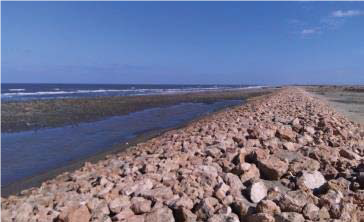Flexible protection measures for adaptation with Sea Level Rise on the Nile Delta, Egypt

Published: 02 Sep,2024
The Nile Delta in Egypt is one of the most vulnerable areas in the world to climate change and seal level rise (SLR), which could cause devastating damages to water resources, agriculture land, people, properties and institutions. Therefore, adaptation measures must be carried out in order to safeguard inhabitants, properties and infrastructure in the Nile delta. The Government of Egypt (GoE) along with the Global Environmental Facility (GEF) and UNDP have jointly funded the Adaptation to Climate Change in the Nile Delta through the ICZM project (ACCNDP). The ACCNDP has piloted and assessed the performance of flexible techniques to protect the Nile Delta from the anticipated inundation impacts of SLR and consequently improve its resilience. The site is a low-lying area between Rasheed and El-Burulus, it is chosen based on a survey undertaken for the whole area of about 60 km and depth 0.5 km. Three adaptation measures were constructed in three zones.

Site layout
- The construction started in November 2015 and completed in April 2016, the performance efficiency of these structures was tested through the winter season of three consecutive years of 2016, 2017, and 2018 during which a number of extreme events has occurred but no damages were observed and they remained intact preventing land inundation. The sand fence continued to build up, water did not penetrate it and no erosion in its body was noticed, the clay core dike also continued to build up with no significant increase of water levels in wells, also, the usedSand Fences Dike where wooden fences are used to capture the sand blown by the wind and build sand dunes to protect existing properties
- Clay Core Dike where dredged material from El-Brulus Lake was used as a core and covered with sand and vegetation to protect the dike faces and crest. Five monitoring wells were installed within the dike bode to monitor the seepage within the dike.
- Geo-Tube Dike covered with dredged clay from El-Brulus Lake, protected by dolomite stones and a monitoring basin behind the dike to monitor the over topping and seepage.
The construction started in November 2015 and completed in April 2016, the performance efficiency of these structures was tested through the winter season of three consecutive years of 2016, 2017, and 2018 during which a number of extreme events has occurred but no damages were observed and they remained intact preventing land inundation. The sand fence continued to build up, water did not penetrate it and no erosion in its body was noticed, the clay core dike also continued to build up with no significant increase of water levels in wells, also, the used vegetation grew in different rates. The Geo-tube core dike performed as well where seepage was insignificant.

Fig A: Sand fences dike

Fig B: Clay core dike

Fig C: Geo-tube dike
Figure A, B, and C shows each dike after an extreme weather event in 2018. Fig A shows that a second row of fences was constructed to widen the natural dike (or dune) that was created by capturing the blown sand by wind. Fig B and C show that sea water was accumulated in front of the dikes but caused no damage to them.
Based on the success of this pilot project, the GOE with assistance of UNDP was able to secure grant from the Green Climate Fund, that would enable Egypt to protect the entire lowlands on the Nile Delta with low cost environmentally friendly techniques covering a length of 69 km. The project titled Enhancing Climate Change Adaptation in the North Coast and Nile Delta Regions in Egypt Project (aka ECCADP) started in November 2018.
In August 2020, Dr. Mohamed Ahmed Ali (the Executive Manager of the ECCADP) reported that upscaling of the ACCADP pilot projects is currently ongoing in 27 kms length of Kafr Elsheikh Coast. Four contracts have been commissioned to contractors for the construction of the soft structures. Two of them have accomplished nearly 60% of their sections. The other two have just started. It is foreseen that full construction along the 27km coast shore will be finalized by mid-2021.